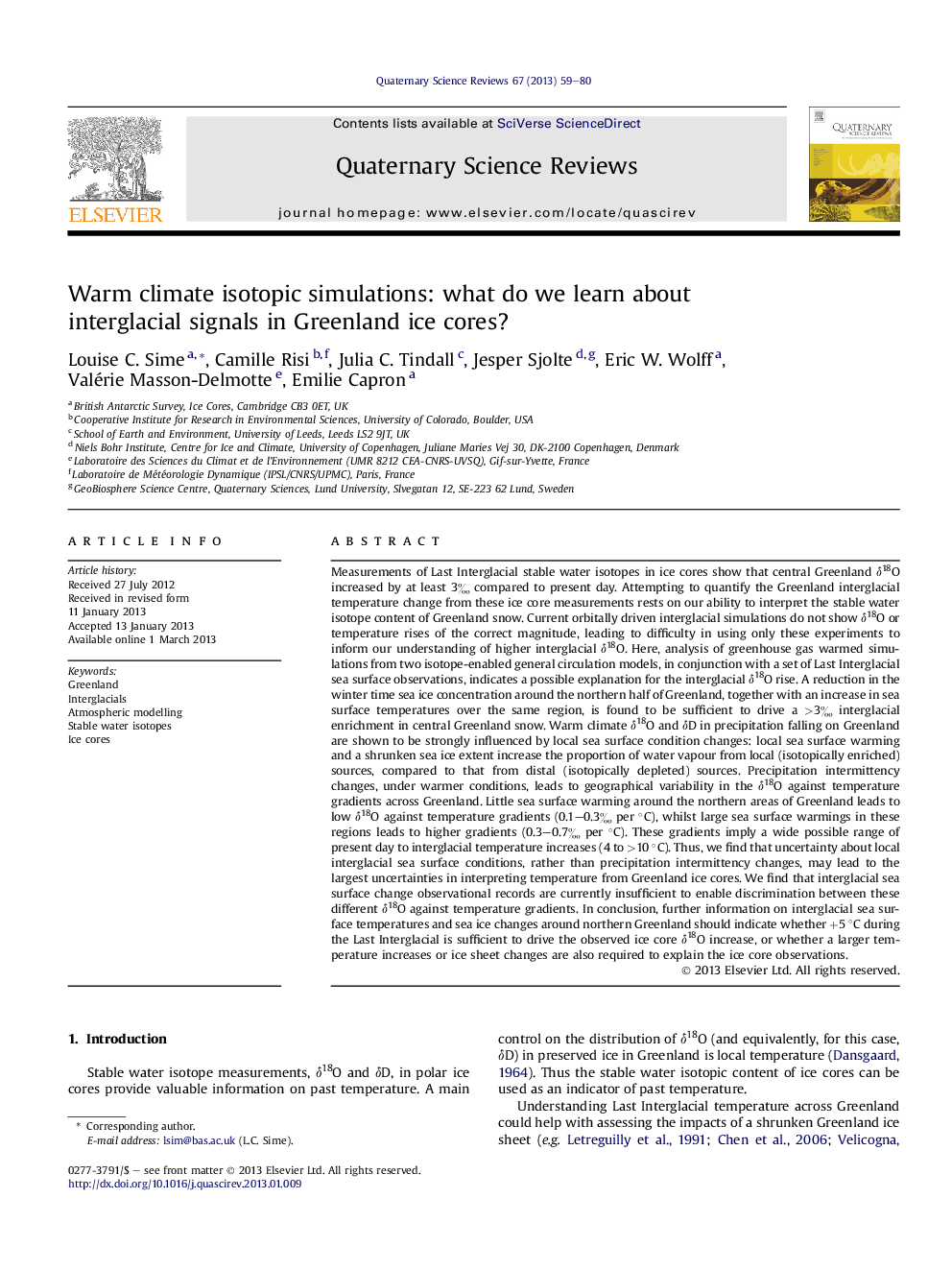| کد مقاله | کد نشریه | سال انتشار | مقاله انگلیسی | نسخه تمام متن |
|---|---|---|---|---|
| 4737013 | 1640867 | 2013 | 22 صفحه PDF | دانلود رایگان |
Measurements of Last Interglacial stable water isotopes in ice cores show that central Greenland δ18O increased by at least 3‰ compared to present day. Attempting to quantify the Greenland interglacial temperature change from these ice core measurements rests on our ability to interpret the stable water isotope content of Greenland snow. Current orbitally driven interglacial simulations do not show δ18O or temperature rises of the correct magnitude, leading to difficulty in using only these experiments to inform our understanding of higher interglacial δ18O. Here, analysis of greenhouse gas warmed simulations from two isotope-enabled general circulation models, in conjunction with a set of Last Interglacial sea surface observations, indicates a possible explanation for the interglacial δ18O rise. A reduction in the winter time sea ice concentration around the northern half of Greenland, together with an increase in sea surface temperatures over the same region, is found to be sufficient to drive a >3‰ interglacial enrichment in central Greenland snow. Warm climate δ18O and δD in precipitation falling on Greenland are shown to be strongly influenced by local sea surface condition changes: local sea surface warming and a shrunken sea ice extent increase the proportion of water vapour from local (isotopically enriched) sources, compared to that from distal (isotopically depleted) sources. Precipitation intermittency changes, under warmer conditions, leads to geographical variability in the δ18O against temperature gradients across Greenland. Little sea surface warming around the northern areas of Greenland leads to low δ18O against temperature gradients (0.1–0.3‰ per °C), whilst large sea surface warmings in these regions leads to higher gradients (0.3–0.7‰ per °C). These gradients imply a wide possible range of present day to interglacial temperature increases (4 to >10 °C). Thus, we find that uncertainty about local interglacial sea surface conditions, rather than precipitation intermittency changes, may lead to the largest uncertainties in interpreting temperature from Greenland ice cores. We find that interglacial sea surface change observational records are currently insufficient to enable discrimination between these different δ18O against temperature gradients. In conclusion, further information on interglacial sea surface temperatures and sea ice changes around northern Greenland should indicate whether +5 °C during the Last Interglacial is sufficient to drive the observed ice core δ18O increase, or whether a larger temperature increases or ice sheet changes are also required to explain the ice core observations.
► Interglacial isotope increases in Greenland snow have not been previously explained.
► We present an analysis of two sets of warm climate isotope-enabled GCM simulations.
► We find local sea surface warming isotopically enriches Greenland snow.
► Arctic interglacial sea surface warming could explain these ice core observations.
► We show current interglacial observations do not yet indicate if this occurred.
Journal: Quaternary Science Reviews - Volume 67, 1 May 2013, Pages 59–80
